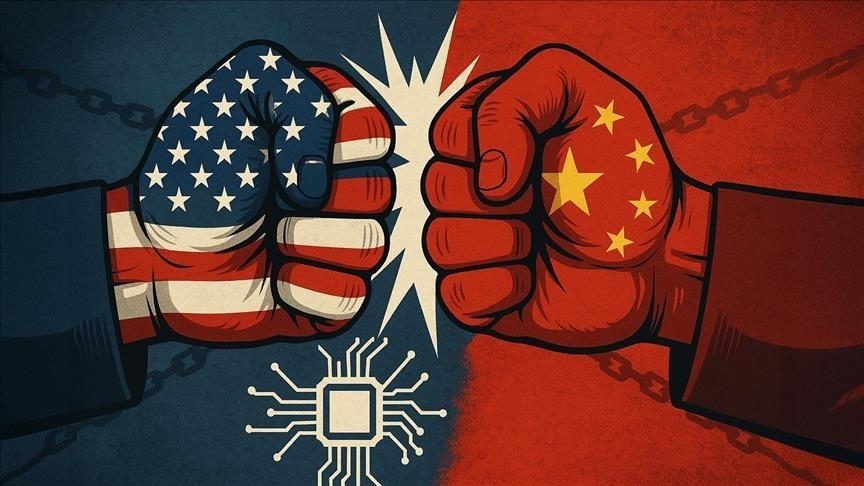US-China 5G rivalry heats up amid preparations for 6G
While US became 1st country to introduce 5G, Asian firms and especially Chinese ones reign supreme in 5G base station market, bringing coverage from across Asia to Middle East

ANKARA
The 5G competition between the US and China has intensified as preparations for 6G continue.
The US was the first country to utilize 5G in 2018, and its four major carriers began offering the service across the nation in 2019.
South Korea was the second to establish its 5G network, which began the trend of Asian countries offering better and more advanced 5G services compared to the US.
The US plans to activate around 200 million 5G subscriptions by 2026, which would cover 72% of the US mobile market.
Meanwhile, Japan, China, and South Korea became world leaders in 5G.
China, in particular, boasts the world’s largest 5G network both in terms of its production and widespread installation, thanks to significant state support.
Europe followed suit towards the end of 2020, as the UK, Italy, Belgium, Latvia, Czechia, Denmark, Austria, Germany, Ireland, Sweden, Hungary, Romania, Slovenia, Spain, Bulgaria, Poland, Finland, and the Netherlands started using 5G one after the other.
European 5G base stations per user remained quite low compared to Asia, and the slow progress of European countries converting their 4G bases to 5G was due to the delayed transition to 4G in the beginning.
Meanwhile, Saudi Arabia enjoys the highest 5G data speeds, followed by Kuwait in the Middle East region.
Some mobile carriers say that around 4.5 billion 5G subscriptions will be active by 2027, while in Europe, 5G is expected to be the preferred subscription at an 85% share in the total market.
At the same time, competition for 5G infrastructure intensified as one of the long-standing tech rivalries between the US and China.
China’s global players like Huawei and ZTE pursue export-oriented strategies with a global growth policy, while the US prefers a security-focused approach.
The US banned the use of 5G equipment from Chinese firms in recent years, including ones from Huawei and ZTE, and the country is also allowing non-Chinese 5G equipment providers like Ericsson, Nokia, and Samsung for its infrastructure.
The UK, Canada, and Australia have similarly imposed restrictions on Chinese 5G equipment. Despite this, Chinese companies maintain their leading position in 5G, establishing infrastructure in many countries across Asia to the Middle East.
US companies like Qualcomm produce 5G chips, while Oracle and Cisco make infrastructure software, but no American firm stands out in 5G base stations like Chinese ones.
The number of registered patents in China also reveals the competition in tech. Huawei boasts the most patents, followed by the US-based Qualcomm, South Korean firms LG and Samsung, American firm Ericsson, and Chinese firm ZTE.
Major firms working with 5G are also working on the next-generation infrastructure -- Ericsson, in addition to Huawei, has been working on delivering 6G since 2020.
The 5G technology enables real-time processing of a high volume of artificial intelligence (AI)-generated data, the Internet of Things (IoT) applications, and automation.
Meanwhile, 6G aims to create a more advanced technical infrastructure, while it is expected to be introduced to commercial markets in the early 2030s.
Anadolu Agency website contains only a portion of the news stories offered to subscribers in the AA News Broadcasting System (HAS), and in summarized form. Please contact us for subscription options.







